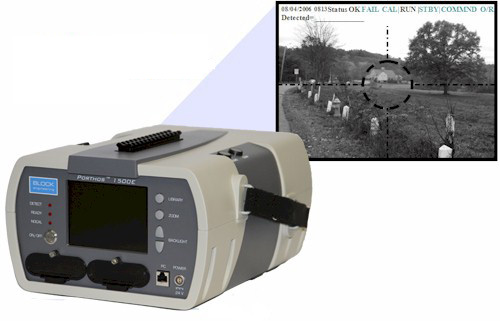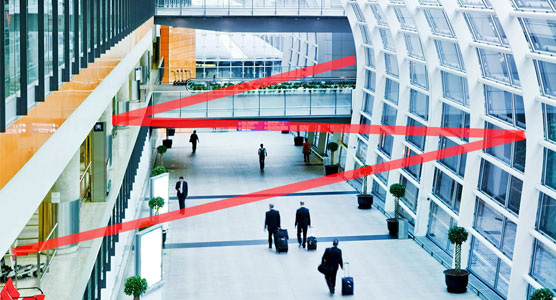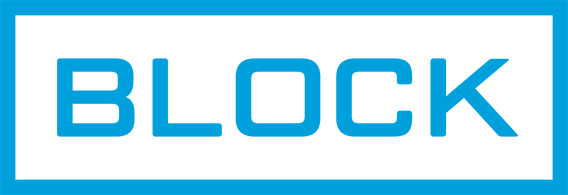Quantum Cascade Laser Versus FTIR Detection of Chemical Threats
 Fourier Transform Infrared (FTIR) spectroscopy is a chemical identification technology that was developed in the mid-20th century. Some of the key advances leading to present-day FTIR systems were made by Block Engineering's founder, Dr. Myron Block, and his colleagues.
Fourier Transform Infrared (FTIR) spectroscopy is a chemical identification technology that was developed in the mid-20th century. Some of the key advances leading to present-day FTIR systems were made by Block Engineering's founder, Dr. Myron Block, and his colleagues.
Over the past two decades, newer chemical detection technologies have emerged. These include laser-based spectroscopy techniques that allow for greater speed and large area detection.
What are the advantages of both FTIR and laser-based chemical detection approaches? Let's begin with a look at two common types of FTIR instruments.
Continuous Sampling FTIR
"Continuous sampling" FTIR spectrometers typically use a pump to draw air into a chamber called a gas cell. The FTIR completes a chemical analysis on the air located within the cell, and threats are identified.
These types of continuous sampling systems are often attached to heating and air conditioning (HVAC) systems in buildings, or used at strategic points in chemical production facilities. They are sometimes referred to as "ambient air monitors," as only the ambient (surrounding) air is tested.
Continuous sampling FTIR systems may not identify a chemical threat until several minutes after its release, as the chemical gas needs to traverse open space and come into contact with the system itself.
If a hazardous chemical is detected within a building's HVAC system, it has likely already traveled throughout the building by the time a chemical identification is made. At this point, adverse effects on people may have already begun. This delayed alarm scenario results because detection is not done at a distance.
In addition, FTIR systems typically involve pumps, filters, and other elements that may require replacement. Humidity can be a big concern for continuous sampling FTIRs. Maintenance costs can be significant.
For applications that require rapid detection of chemical threats at a distance of hundreds of meters away, a second type of FTIR system offers advantages.
Passive Standoff FTIR
"Passive standoff" FTIR systems use a different approach. Instead of drawing air into a gas cell, these systems more closely resemble cameras. They are pointed directly (often manually) at a location in the distance, and use thermal and background radiation differences to identify chemicals at hundreds of meters away.
 However, passive standoff FTIR systems are quite expensive — often $300,000 to $600,000 per unit.
However, passive standoff FTIR systems are quite expensive — often $300,000 to $600,000 per unit.
In addition, while they easily identify chemicals against a "blank canvas" of a blue sky, the sensors often experience interference in ground-based, thermally-complex environments. Passive standoff FTIR systems are often ineffective in indoor environments.
In addition, line-of-sight is required for passive standoff FTIR systems. For outdoor, clear-sky applications (for example, the identification of gas clouds above a battlefield), passive standoff FTIR systems can be excellent. In high-interference, ground-based environments, their detection ability may be significantly reduced.
Both types of FTIR systems involve delicate and often fragile optical components, including rapidly moving internal mirrors. In safe, stationary lab-based setting, the fragility of components isn't a concern. However, in the field, FTIR systems can be vulnerable to shock, vibration, rough handling, and other environmental challenges.
Quantum Cascade Laser Open Path Detection
Block Engineering switched its technology focus from passive standoff FTIR systems to modern laser-based systems to utilize a new type of light source called a quantum cascade laser (QCL).
Quantum cascade laser "open path" spectrometers combine the lower cost of a continuous sampling system with the distance-detection capabilities of a passive standoff system.
 Unlike FTIR systems, QCL open path systems shine an invisible, eye-safe, infrared laser beam along a path. This laser beam then serves as a type of "chemical trip-wire" which extends out into the space to be protected. The system is able to detect and identify chemicals that cross the beam path within a few seconds.
Unlike FTIR systems, QCL open path systems shine an invisible, eye-safe, infrared laser beam along a path. This laser beam then serves as a type of "chemical trip-wire" which extends out into the space to be protected. The system is able to detect and identify chemicals that cross the beam path within a few seconds.
QCL open path system can detect chemicals from hundreds of meters away, even in extremely complex and thermally challenging environments. Line of sight is required, but complex geometries can be protected by "bending" the laser path around corners or objects with mirrors.
Unlike ambient FTIR systems, there are no pumps, filters, or consumables. The cost is far less than most passive standoff systems. Fragile and breakable components within the system are reduced. Sensitivity at great distances is excellent, and detection can be made within four seconds of release.
The quantum cascade lasers used by Block also allow for precise targeting of the 7 to 12 micron wavelength range, a region of the infrared spectrum in which toxic and hazardous chemicals are easily detected.
For protection of large areas — airports, transit hubs, concert venues, corporate or research campuses — quantum cascade laser spectrometers can provide excellent 24/7 monitoring of chemical threats.
We would be happy to discuss our LaserWarn open-path QCL system with you. Please contact us to schedule a conversation.

